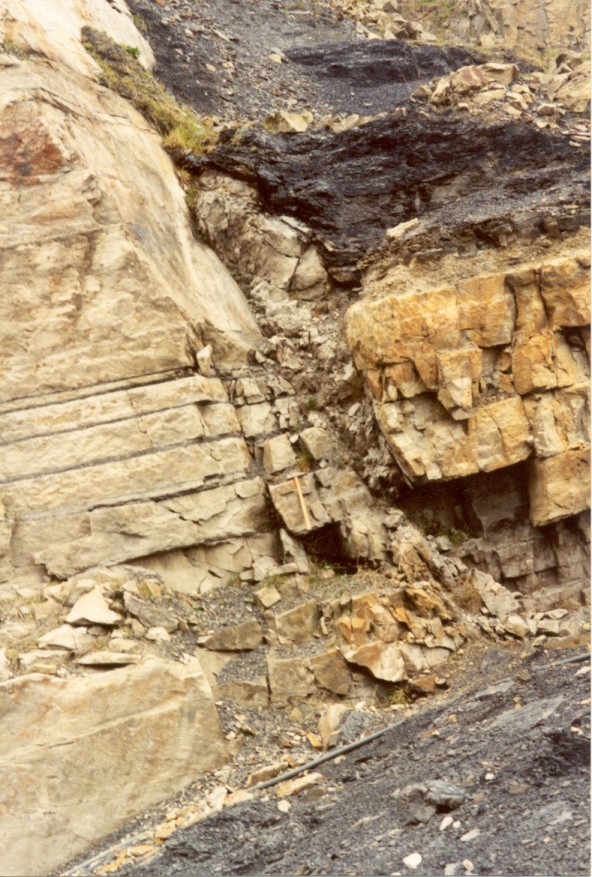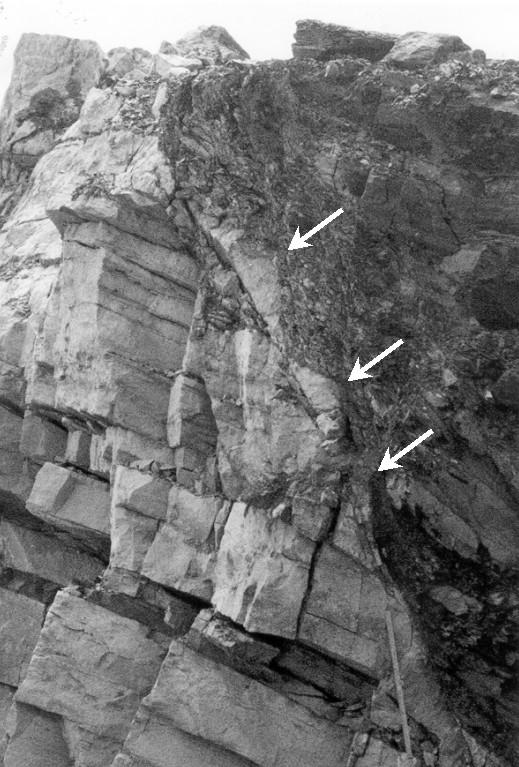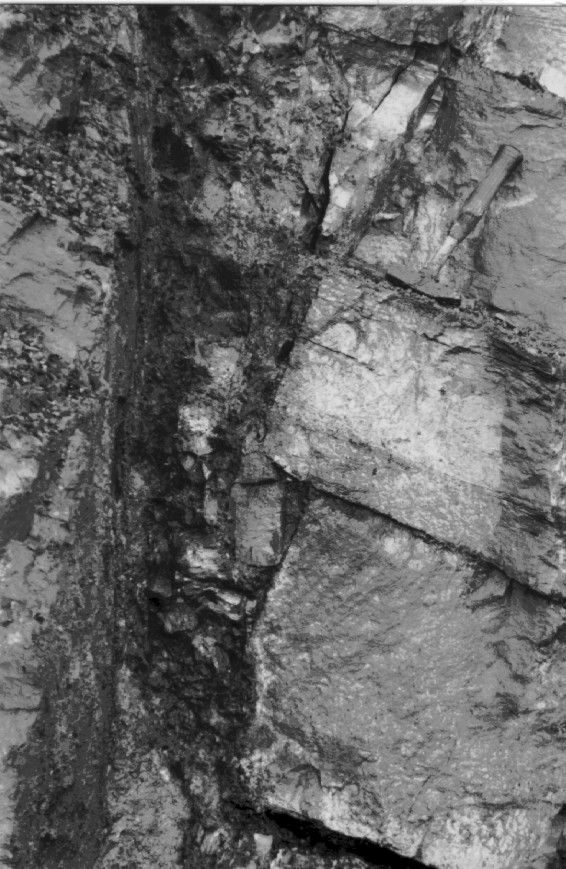Quarry face showing 2 normal fault surfaces in the Upper Carboniferous sandstone and shale sequence of Round O Quarry, Lancashire, UK. The aggregate displacement on the two fault surfaces is 15m. These fault surfaces link laterally within 50m of existing quarry face, but also link within the observation plane (the face is not flat). The fact that the faults link within the face is reflected in the apparent marked decrease in displacement on the footwall fault from the top of the lower sandstones to the top of the shales; the footwall fault links through the shales onto the hangingwall fault. The accommodation problems associated with faults cutting through a multilayer are reflected in the removal of a triangular block (within box) derived from the top of the lower sandstone. See next photograph.

Enlarged portion of working face shown above. A triagular block, derived from the footwall block of the top of the lower sandstone, has been transported down the fault. This block was at the boundary between the sandstones and shales and represents an asperity that has been removed, transported down the footwall fault surface and in the process been thoroughly fractured ands deformed.

Cross-section of the footwall margin of a ca 5m displacement normal fault in Upper Carboniferous sandstone and shale sequence, Round O Quarry, Lancashire. The triangular blocks (arrowed) are original asperities forming a part of the footwall, now detached from the footwall by a new planar slip surface and incorporated into the fault zone. The triangular shape of the blocks is characteristic of asperities which originated by bed-parallel slip (Watterson et al. 1998). Scale is given by 1m rule, bottom right.

Cross section of 210 cm displacement fault zone at Round O Quarry, Lancashire (UK), with footwall (left) separated from hangingwall (right) by 15-30 cm of shaley fault gouge containing sandstone blocks of various sizes. Overhanging steps on hangingwall slip surface contrast with straight footwall slip surface. Note eroded corner of lowermost sandstone bed (1) and early stage of same process at lower left corner of middle sandstone unit. Entire overhanging step in uppermost sandstone unit is heavily fractured and mechanically isolated from wall rock (2). Sandstone blocks at lower center (3) are interpreted to be eroded asperities. Scale is shown by 30 cm long hammer, upper right. See Watterson et al. (1998).